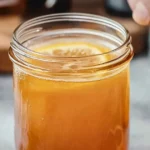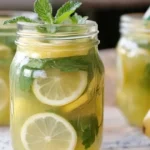
Discover the ultimate tepache recipe, a traditional Mexican drink made from pineapple peel and core. This refreshing beverage combines sweet, tart, and fizzy flavors for a unique taste experience.
By following this tepache recipe, you can enjoy a probiotic-rich drink made through natural fermentation. Learn how to prepare this delightful drink and bring authentic Mexican flavors to your home.
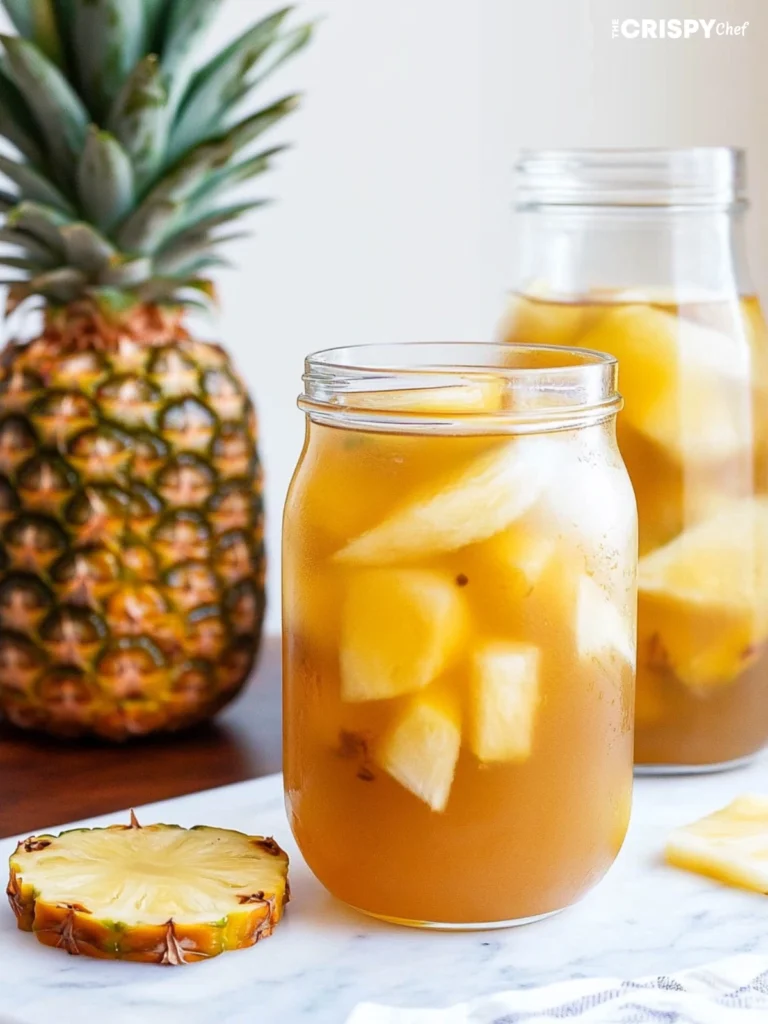
Table of Contents
Key Takeaways
- Tepache is a traditional Mexican fermented pineapple drink with a sweet, slightly alcoholic flavor
- The fermentation process takes just 1-3 days at room temperature, producing a probiotic-rich beverage
- Tepache can be customized with various spices and flavorings to suit your taste preferences
- Making tepache at home allows you to explore the drink’s cultural heritage and enjoy its refreshing benefits
- Proper preparation and fermentation techniques are key to crafting the perfect batch of tepache
Understanding What Tepache recipe Is and Its Mexican Heritage
Tepache recipe is a traditional Mexican drink with roots in pre-Columbian culture. It’s made by fermenting pineapple peels and core with sugar and spices like cinnamon. People enjoyed it for its medicinal properties, especially in the summer.
Origins and Cultural Significance
The Nahua people of pre-Columbian Mexico loved tepache. Its fermentation process adds a unique carbonation. This makes it a refreshing and tangy drink.
Traditional Uses in Mexican Cuisine
In Mexico, tepache is a popular drink sold by street vendors. In the U.S., it’s found in juice bars and Mexican restaurants in the Southwestern region. People love to try new variations of this traditional drink.
Basic Components of Tepache
The main ingredients of tepache recipe are pineapple peels, sugar, and water. You can also add spices like cinnamon. Fermenting it for 1 to 3 days at room temperature is all it takes. The longer it ferments, the stronger the drink becomes.
Essential Ingredients for Making Tepache
Making homemade tepache recipe is easy and only needs a few things. The main ingredient is the pineapple, including its peels and core. These start the pineapple fermentation process. To sweeten it, you can use piloncillo (unrefined cane sugar) or brown sugar.
You also need filtered water to mix everything. Some recipes suggest adding spices like cinnamon or cloves for extra flavor. But these are optional.
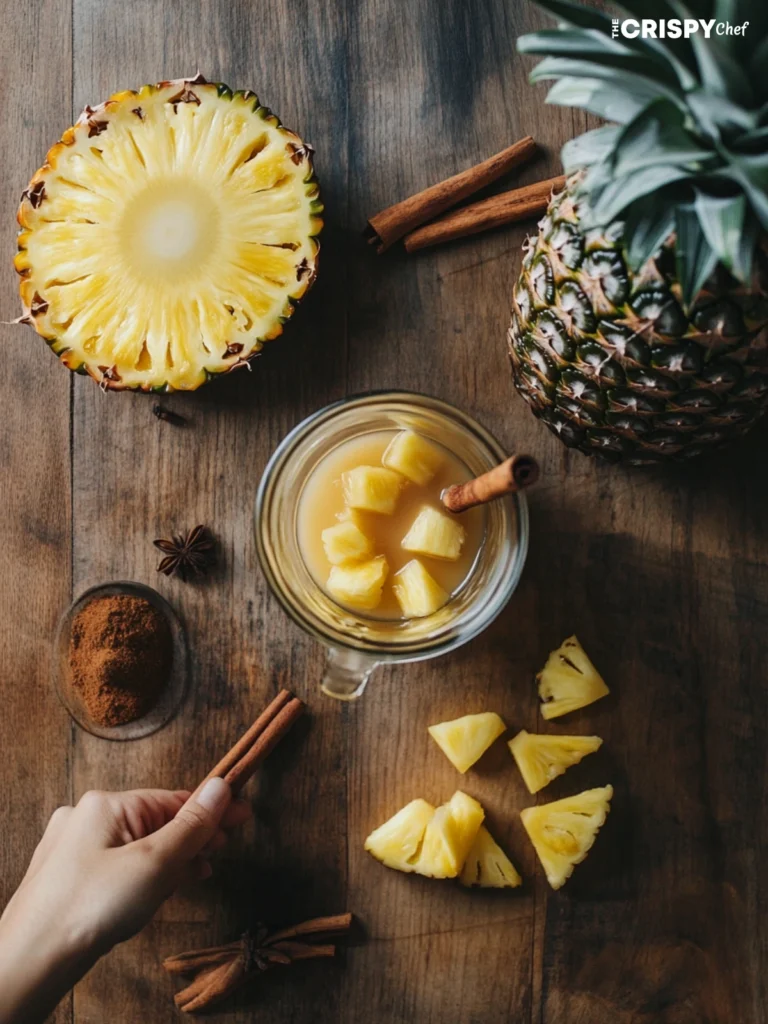
The charm of homemade tepache is its simplicity. With just a few tepache ingredients, you can make a tasty, slightly fermented drink. It highlights the natural sweetness and tartness of pineapple. Let’s explore how these ingredients come together to make this popular Mexican drink.
| Ingredient | Purpose |
|---|---|
| Pineapple peels and core | Provide the natural yeasts to kickstart fermentation |
| Piloncillo or brown sugar | Sweeten the tepache and enhance the caramel-like flavor |
| Filtered water | Dilute the sugar and pineapple flavors, and facilitate fermentation |
| Optional spices (cinnamon, cloves, etc.) | Add depth and complexity to the tepache’s taste profile |
With these basic yet crucial ingredients, you’re ready to make your own delicious tepache at home.
The Science Behind Fermentation in Tepache Making
Tepache, a traditional Mexican drink, gets its flavor and fizz from fermentation. Yeasts and bacteria on the pineapple’s skin turn sugars into alcohol and carbon dioxide.
Natural Fermentation Process
The fermentation of tepache comes from natural yeasts and bacteria. These include Saccharomyces and Lactobacillus species. They eat the pineapple’s sugars, making alcohol and carbon dioxide.
Role of Temperature and Time
Temperature and time are key in making tepache. Warmer temperatures, around 70-80°F (21-27°C), speed up fermentation. This makes the drink more alcoholic and fizzy.
The longer it ferments, the more flavors develop. This also increases the alcohol content.
Signs of Successful Fermentation
- Formation of bubbles: As the yeast and bacteria convert the sugars, they release carbon dioxide, which creates a bubbly, effervescent appearance on the surface of the liquid.
- White frothy foam: The fermentation process also produces a white, foamy layer on top of the tepache, indicating the active conversion of sugars.
- Slightly tart and tangy aroma: The development of acetic acid and other fermentation byproducts gives tepache a distinctive tart and slightly tangy scent.
Understanding fermentation ensures a tasty batch of traditional tepache every time.
“Fermentation is an ancient preservation method practiced by humans for approximately 10,000 to 15,000 years.”
Step-by-Step Tepache Recipe
Learn how to make your own tepache, a traditional Mexican drink. It’s full of good bacteria and tastes amazing. This simple recipe will bring a taste of Mexico to your home.
Start with a fresh pineapple. Clean it well, then peel and take out the core. Put the pineapple peels and core in a big pot or jar. Add 3 piloncillo cones (or 1 cup of brown sugar) and enough water to cover everything.
Stir it well. You can add a cinnamon stick or cloves for extra flavor. Cover it with a clean cloth. Let it sit at room temperature for 3 to 5 days.
As it ferments, you’ll see bubbles and it will get a bit tart. Strain the liquid when it tastes right. Throw away the solids.
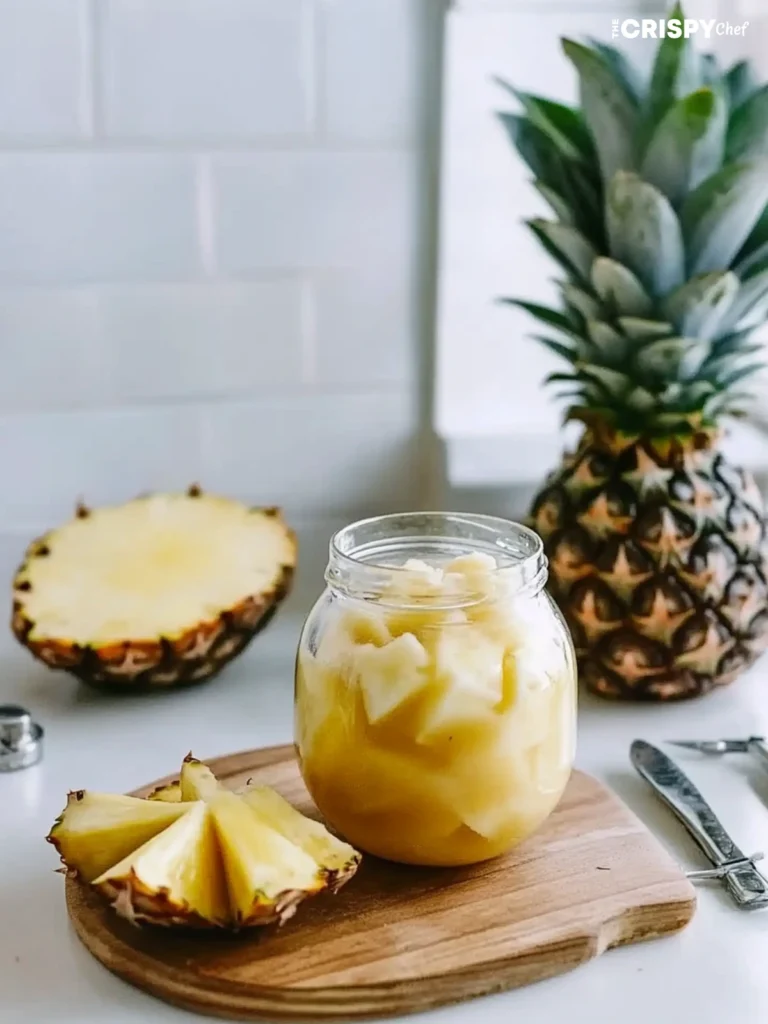
Put the tepache in bottles with tight lids to keep it fizzy. Store it in the fridge. Enjoy it cold or mix it into cocktails. This homemade tepache recipe lets you taste Mexico at home.
Tepache is very flexible. Try adding spices like allspice berries or cardamom to make it your own. Making tepache is an art that brings health and fun to your drinks.
Selecting and Preparing the Perfect Pineapple
When making traditional tepache, the quality and preparation of the pineapple are key. Choosing the right pineapple and cleaning and cutting it properly can greatly affect the flavor and fermentation of your tepache.
Choosing the Right Ripeness
A ripe, flavorful pineapple is essential for a great tepache. Look for a pineapple with a golden or yellow-orange color and a sweet, fragrant smell at the base. The leaves should be bright green, and the fruit should be slightly soft to the touch. Pineapples that are too green or have a dull color may not be sweet enough for good fermentation.
Proper Cleaning Techniques
Before using the pineapple, clean it well. Rinse the pineapple under cool water, but don’t scrub too hard. This can remove the natural yeasts on the peel that are important for fermentation. Gently wipe the pineapple with a clean cloth or paper towel to remove dirt or residue.
Cutting and Storage Tips
After cleaning, start preparing the pineapple. Remove the crown and the bottom. Then, peel the fruit, making sure to remove the entire peel in strips. The peel and core will be used in the tepache recipe. Save any leftover pineapple flesh for snacking or other dishes. Store unused pineapple pieces in the fridge until you’re ready to use them.
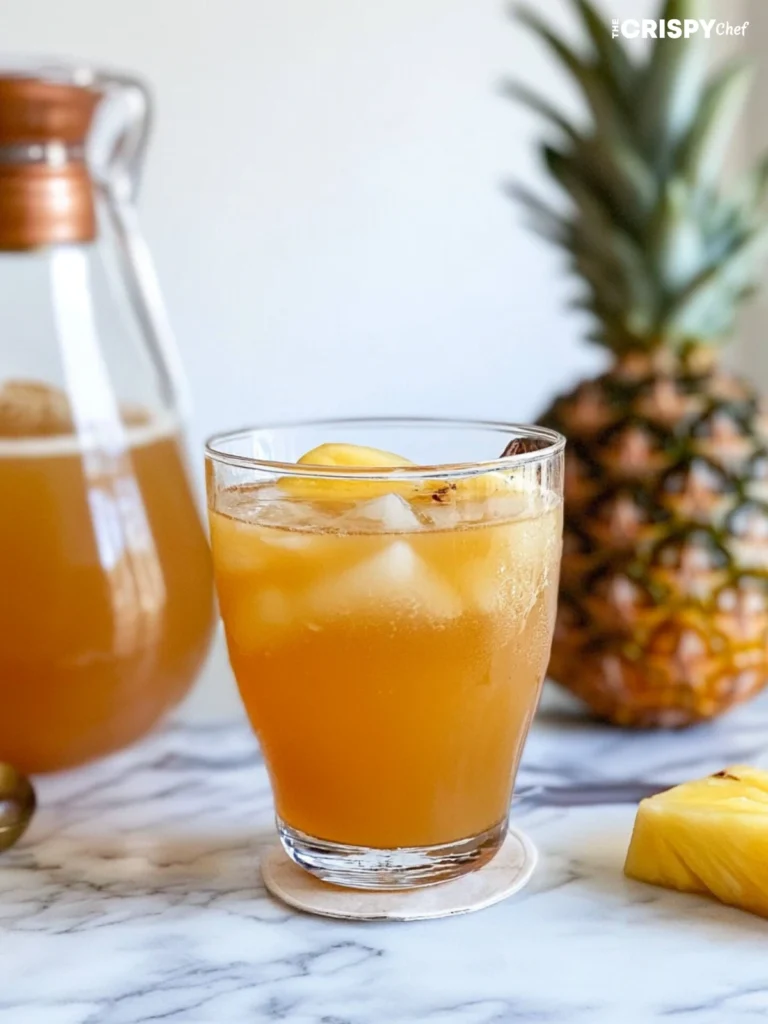
By choosing the right pineapple, cleaning it properly, and cutting and storing it correctly, you’re on your way to making delicious, authentic tepache at home.
Sugar Options and Substitutions
Traditional tepache uses piloncillo, a raw cane sugar. But, you can try other sugars to make your own tepache. This way, you can find the perfect sweetness for you.
Brown sugar or regular cane sugar can replace piloncillo. You can adjust the sugar from 1/2 to 1 cup per batch. This lets you choose how sweet you like it.
Honey, agave nectar, and maple syrup are natural sweeteners for tepache. But, they might change the flavor a bit. This is because they can affect how the drink ferments.
Using 1/2 cup of raw cane sugar, molasses, jaggery, or piloncillo can ferment tepache recipe well. The taste might differ, though. Coconut palm sugar and pineapple puree are also good tepache sugar options.
Choosing the right piloncillo substitute or natural sweeteners for tepache is key. Adjust the amount to your liking and watch the fermentation. With some trial and error, you’ll find the perfect tepache sugar for your homemade drink.
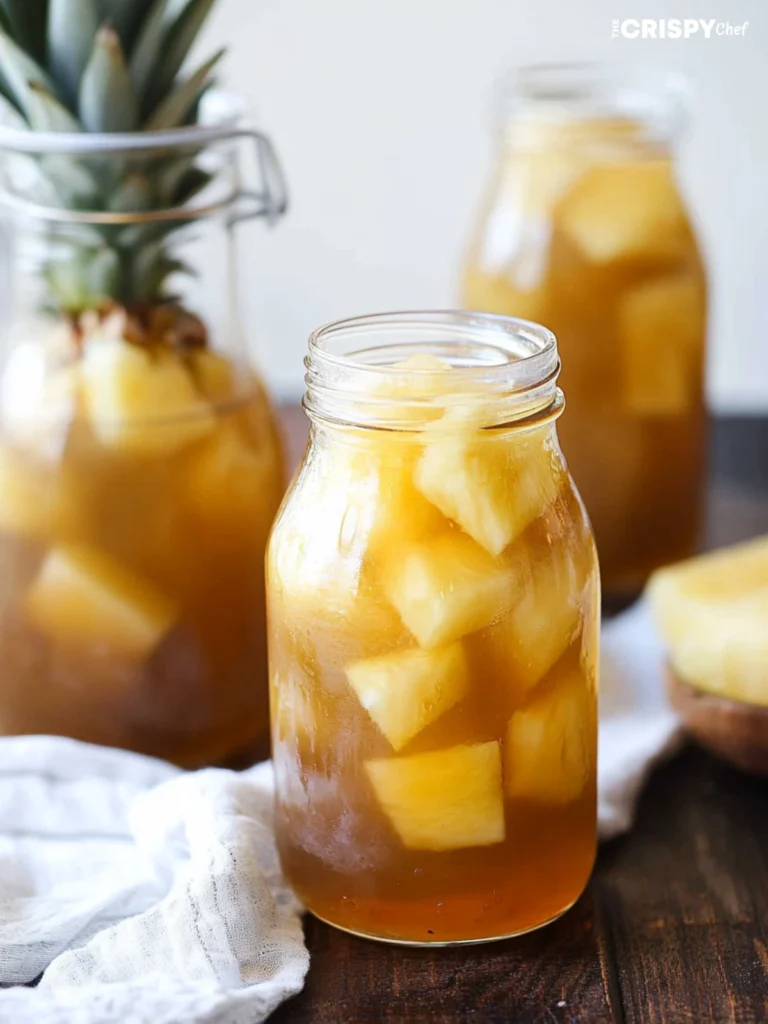
Spices and Flavor Enhancements
Tepache, a traditional Mexican drink, is made with pineapple and water. It gets its depth from spices and flavors. These additions make each sip a special experience.
Traditional Spice Combinations
Cinnamon is a key spice in classic tepache. It balances the pineapple’s sweetness, making it comforting. Cloves or ginger might also be added, bringing a warm or zesty touch.
Modern Flavor Variations
Today, tepache has evolved with new flavors. You can find flavored tepache with mango, strawberry, mint, or basil. These tepache variations let you try new tastes while keeping the drink’s spirit.
Whether you like traditional cinnamon or modern twists, there’s a lot to explore. Trying different tepache spices can make your drink-making fun and exciting. It’s a great way to make your own unique drinks.
“Experimenting with different spice and fruit combinations can create unique flavor profiles while maintaining the essence of traditional tepache.”
Fermentation Timeline and Storage Tips
Making the perfect tepache recipe takes patience and careful attention. The fermentation process usually lasts 24 to 72 hours at room temperature. The exact time depends on the temperature and the flavor you want.
As the tepache recipe ferments, it changes from sweet to tangy and bubbly. Once it’s fermented to your liking, it’s time to strain and chill it. In the fridge, your tepache will stay fresh and flavorful for up to a week.
But remember, the tepache recipe will keep fermenting in the fridge. It will slowly turn more sour over time.
- Tepache recipe typically ferments for 24 to 36 hours at room temperature.
- Store the fermented tepache in the refrigerator for up to 1 week.
- The drink will continue to evolve in flavor, becoming more vinegar-like over time.
“Patience is the key to unlocking the true essence of tepache. Allow the natural fermentation process to work its magic, and you’ll be rewarded with a refreshingly unique beverage.”
Adjust the fermentation time and storage based on your taste and the temperature. Watch your tepache closely. Feel free to try different fermentation times to find your favorite flavor.
Common Mistakes to Avoid When Making Tepache
Making perfect tepache recipe at home needs careful attention and avoiding common mistakes. One key thing is to make sure it ferments right. Using unripe pineapples or letting it ferment too long can make it taste bad. Also, not watching the fermentation closely can lead to contamination and spoilage.
Fermentation Issues
Keeping the right temperature is key for good tepache fermentation. If it’s too cold, fermentation slows down. But if it’s too warm, it can turn sour. By controlling the temperature and checking on it often, you can avoid these problems.
Ingredient Mistakes
Choosing the wrong sugar is another mistake in making tepache. Piloncillo, a brown cane sugar, is traditional, but you can try honey or maple syrup too. But remember, these can change the taste. Also, not cleaning the pineapple skins well or using an unripe pineapple can mess up the flavor and smell. By focusing on the quality and preparation of your ingredients, you can make a great tepache recipe every time.
How long does tepache take to ferment?
Tepache typically takes 2-3 days to ferment. The fermentation time can vary based on room temperature and your desired level of sweetness and carbonation.
Can tepache become alcoholic?
Yes, tepache can become mildly alcoholic, containing 1-2% alcohol due to natural fermentation. Fermenting it for longer periods can increase its alcohol content slightly.
Is tepache as healthy as kombucha?
Tepache and kombucha are both fermented drinks, but kombucha may have more probiotics. Tepache still provides gut health benefits and is a nutritious, low-acid alternative.
Can I drink tepache every day?
Yes, you can drink tepache daily in moderation. It’s a refreshing, low-alcohol beverage that contains probiotics and nutrients that can support digestion and overall health.
Is tepache good for your gut?
Tepache is rich in probiotics from fermentation, which can promote healthy gut bacteria. Its enzymes and vitamins make it a natural aid for digestion and gut health.
What happens if you ferment tepache too long?
Over-fermented tepache can become too sour, overly carbonated, or develop higher alcohol content. If left too long, it might even spoil, losing its pleasant flavor.
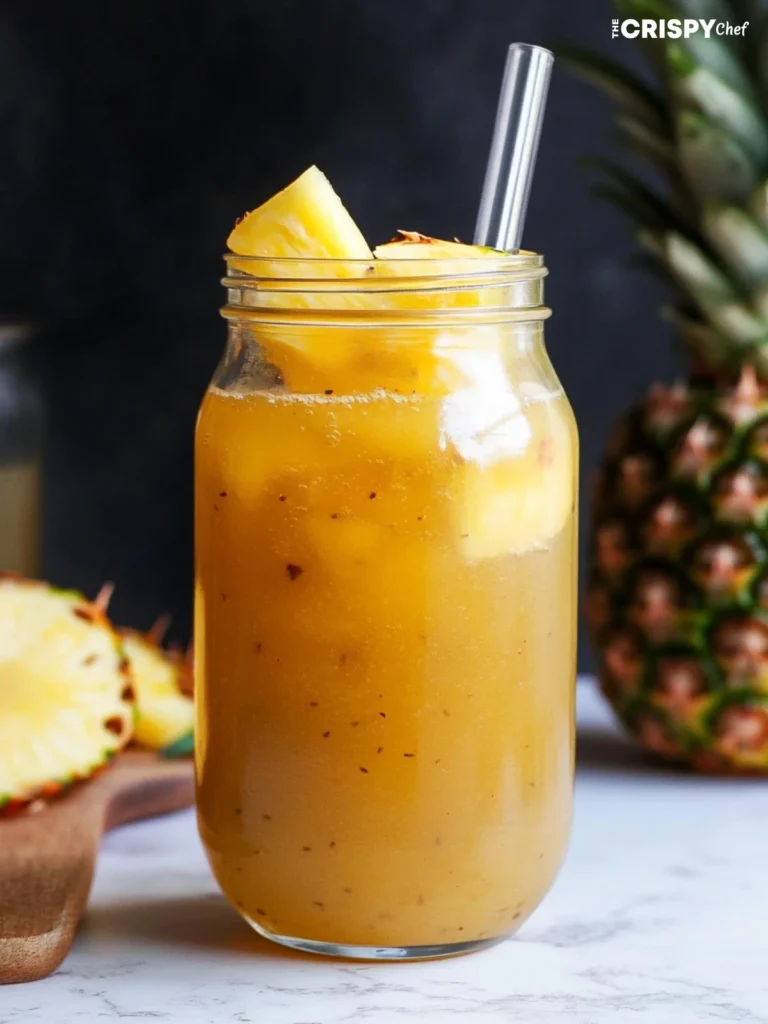
FAQ
What is tepache?
Tepache recipe is a drink made from pineapple peel and core. It comes from Mexico. It’s a refreshing drink that uses fruit parts usually thrown away.
What are the origins and cultural significance of tepache?
Tepache recipe comes from pre-Columbian Mexico. It’s made by fermenting pineapple peels and core with sugar and spices. It was seen as medicinal and is a big part of Mexican food.
What are the basic components of traditional tepache?
Traditional tepache recipe includes pineapple peels and core, sugar, water, and spices like cinnamon or cloves.
How does the fermentation process work in tepache?
Fermentation in tepache uses natural yeasts and bacteria on the pineapple skin. These turn sugars into alcohol and carbon dioxide. This creates the drink’s flavor and fizz.
How do you make tepache at home?
To make tepache, wash and peel a pineapple. Put the peels and core in a jar, add sugar and water, and ferment at room temperature for 24-72 hours. Strain, refrigerate, and serve over ice.
How do you choose the right pineapple for tepache?
Choose a ripe pineapple with a golden color and sweet smell. Clean it well with water, but don’t scrub too hard to keep natural yeasts.
What types of sugar can be used for tepache?
Traditional tepache recipe uses piloncillo, raw cane sugar. But you can also use brown sugar or regular sugar. Adjust the sugar to your taste.
What spices and flavors can be added to tepache?
Traditional tepache recipe often has cinnamon for flavor. Cloves and ginger are also common. Modern recipes might add other fruits or herbs for unique tastes.
How long does the tepache recipe fermentation process take?
Tepache recipe ferments for 24-72 hours at room temperature. The time can change based on temperature and flavor preference.
What are common mistakes to avoid when making tepache?
Avoid using unripe pineapples, over-fermenting, and not watching the fermentation. Also, be careful with ingredients and contamination.
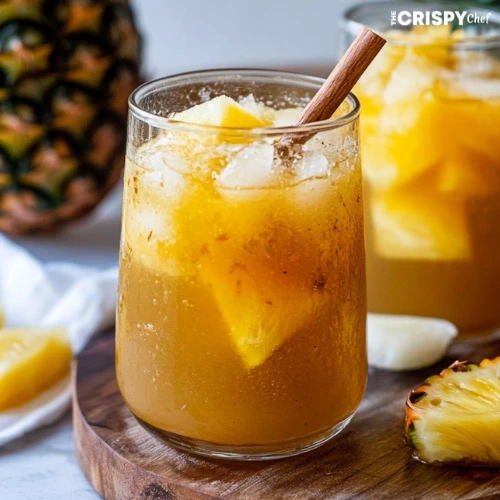
Traditional Mexican Tepache Recipe
Equipment
- Large pot or jar
- Clean cloth or paper towel
- Knife
- Strainer
- Bottles with tight lids
Ingredients
- 1 pineapple peels and core
- 3 piloncillo cones or 1 cup brown sugar
- 6 cups filtered water
- 1 cinnamon stick optional
- 2 cloves optional
Instructions
- Prepare the Pineapple: Rinse the pineapple thoroughly under cool water. Remove the crown and bottom, peel the fruit, and set aside the peels and core.
- Combine Ingredients: Place the pineapple peels and core in a large pot or jar. Add the piloncillo or brown sugar and enough filtered water to cover the ingredients. Stir to dissolve the sugar.
- Optional Flavoring: Add the cinnamon stick or cloves for additional flavor, if desired.
- Fermentation: Cover the pot or jar with a clean cloth and secure it with a rubber band. Let it sit at room temperature for 3-5 days, stirring once a day.
- Monitor Fermentation: Look for bubbles and a tangy aroma to indicate fermentation. Taste the liquid daily to determine your preferred level of tanginess.
- Strain: Once the fermentation process is complete, strain the liquid into bottles. Discard the solids.
- Chill and Serve: Seal the bottles with tight lids and refrigerate. Serve chilled or use as a mixer for cocktails.
Nutrition
